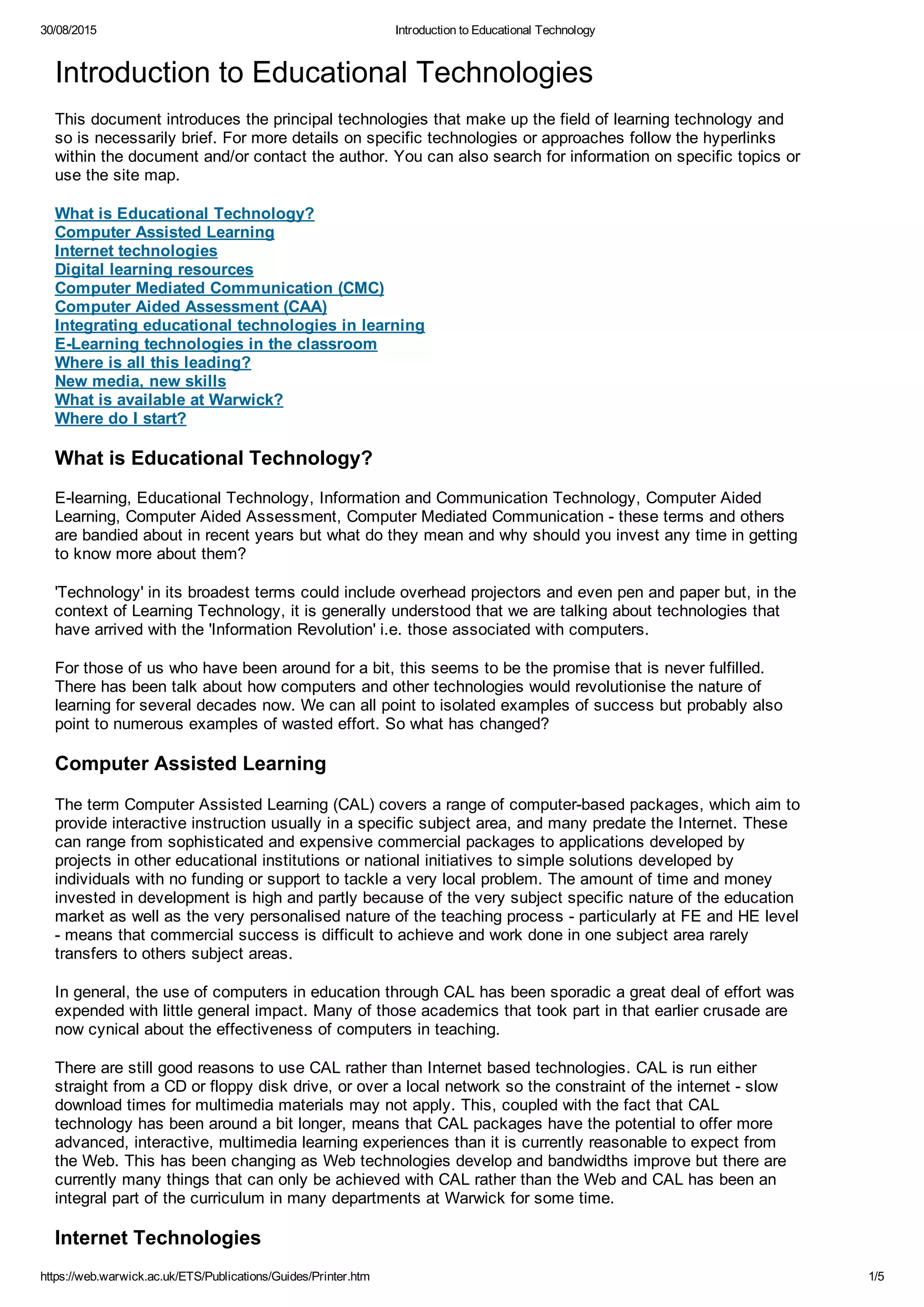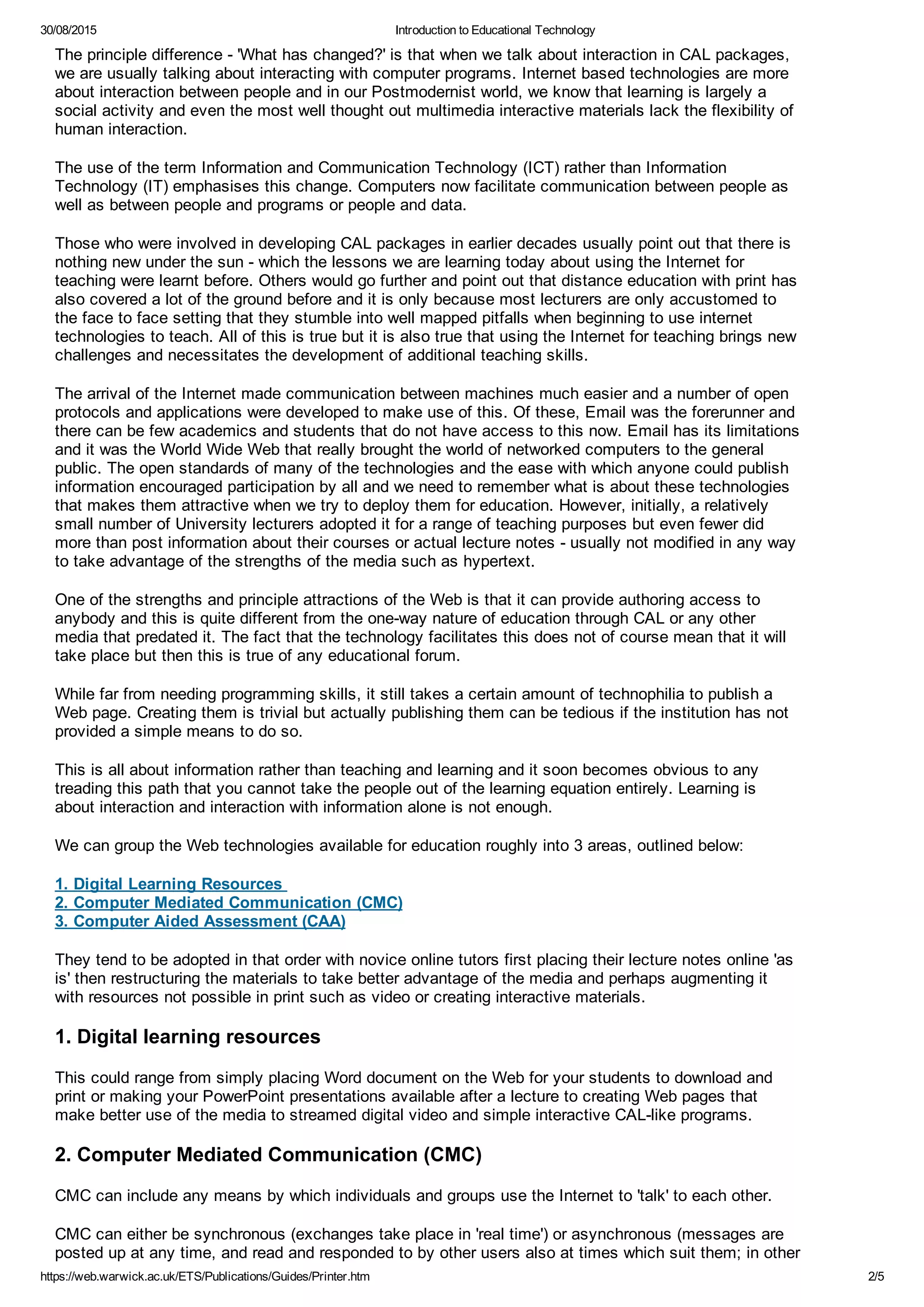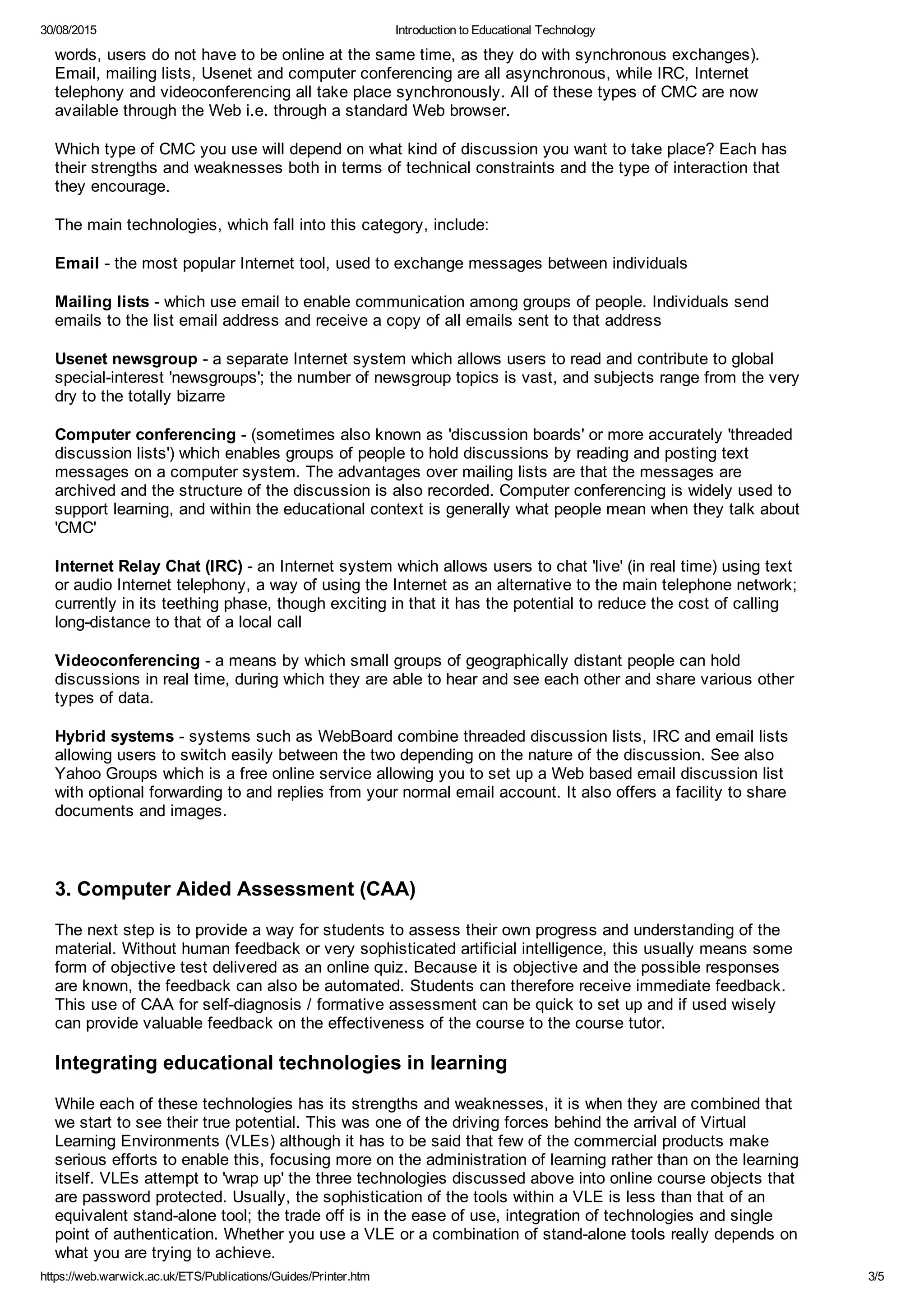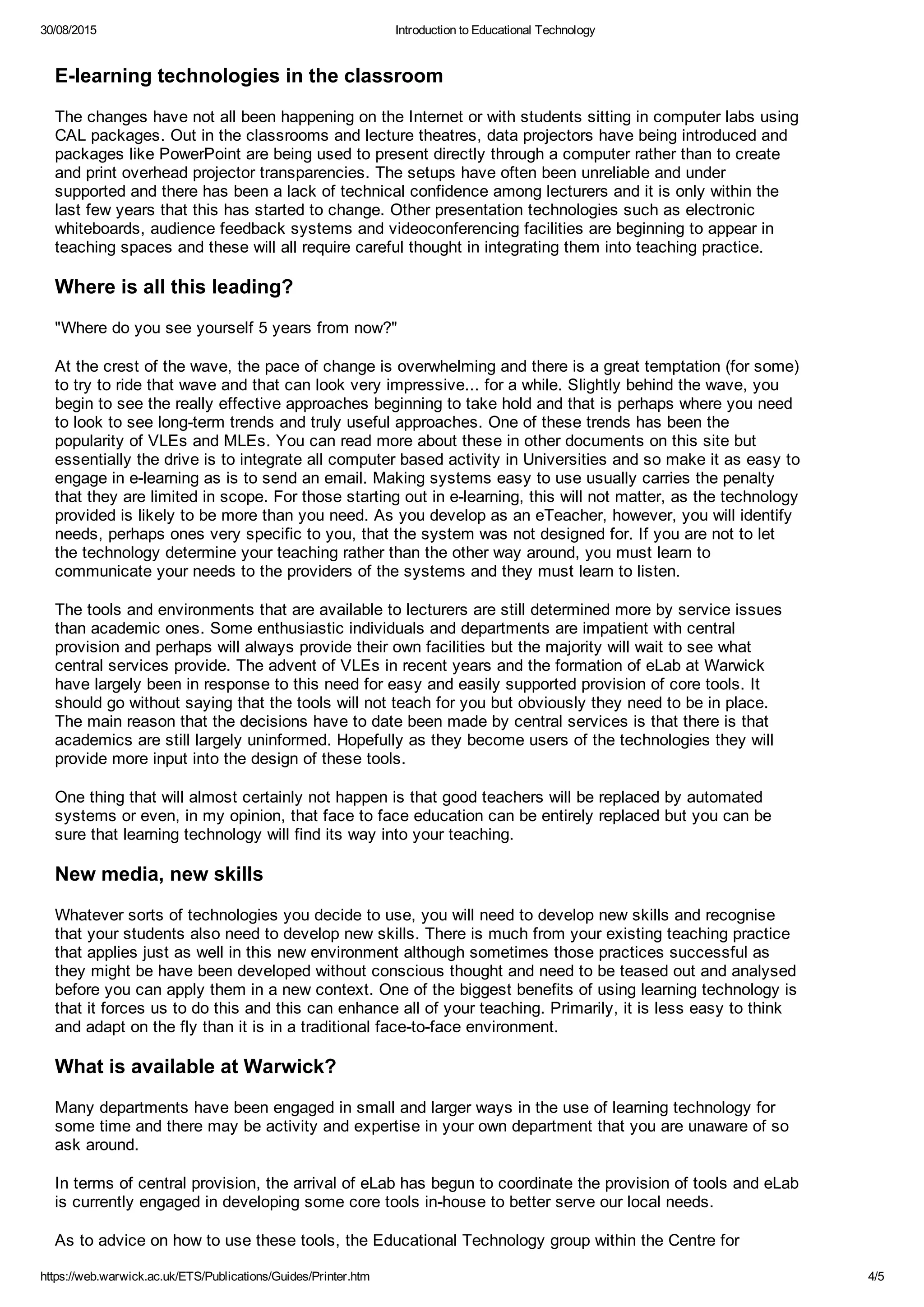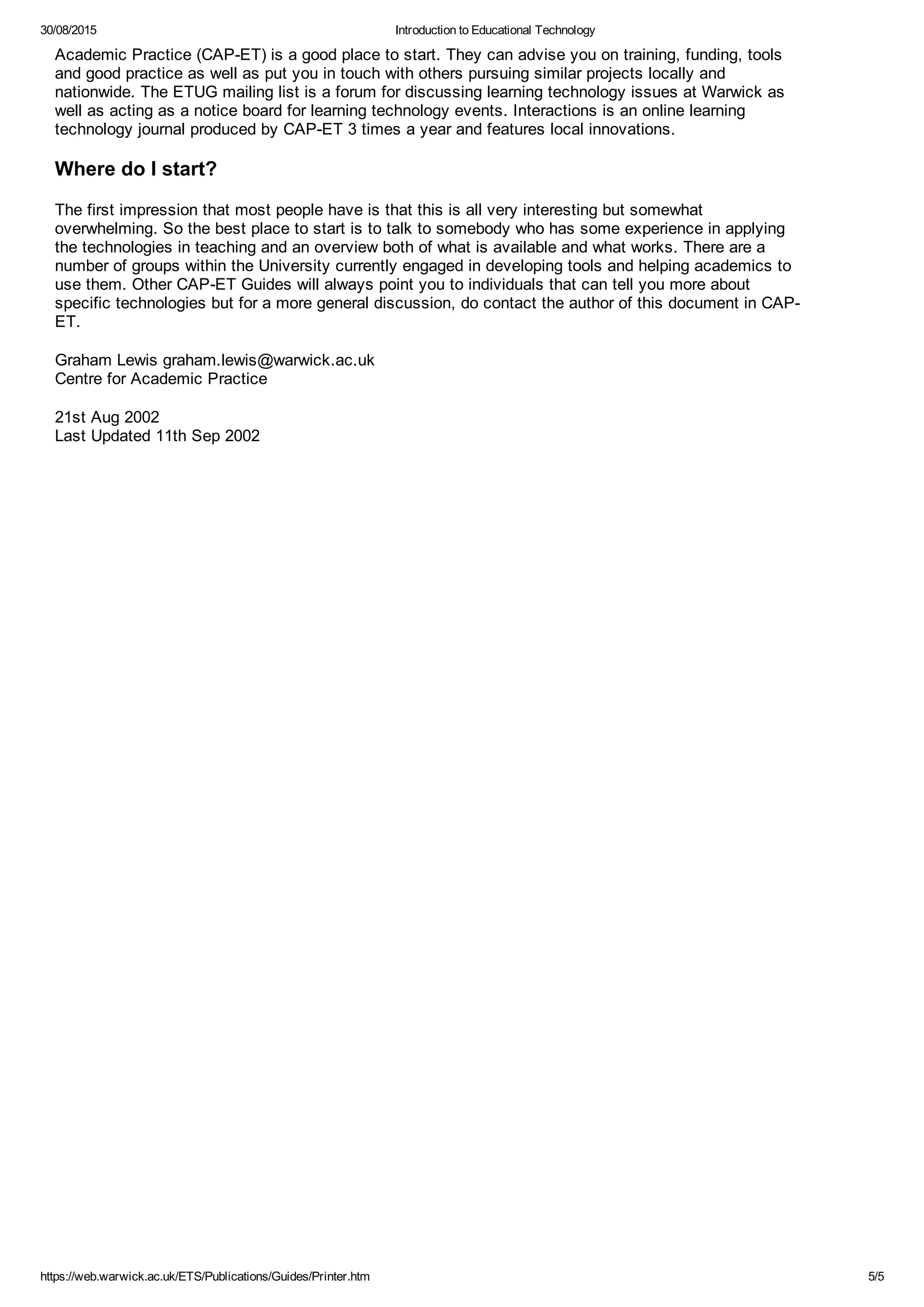This document provides an introduction to educational technologies, including computer-assisted learning (CAL), internet technologies, and digital learning resources. It discusses how educational technology has evolved from early CAL packages to incorporate internet-based communication technologies like email, discussion boards, and digital learning materials. The document outlines three main areas that internet technologies enable for education: 1) digital learning resources, 2) computer-mediated communication (CMC) tools, and 3) computer-aided assessment (CAA). It provides examples of specific CMC tools like email, mailing lists, and videoconferencing that can facilitate interaction between students.
